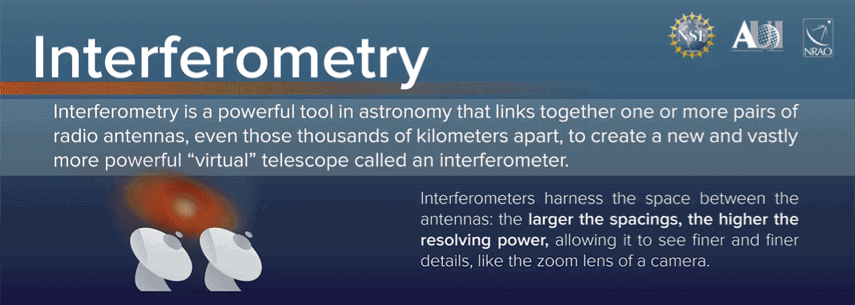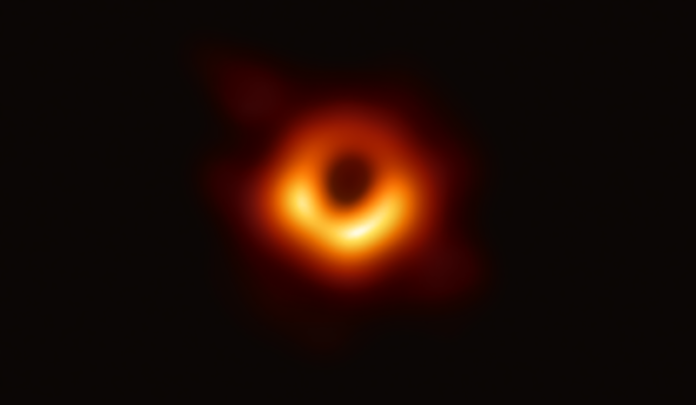In an historic moment for the field of astronomy, an international team of scientists from the Event Horizon Telescope (EHT) collaboration announced last Wednesday that they’d managed to obtain the first ever image of a black hole.
The team is made up of over 200 scientists from 13 different institutions across the globe, including Ue-Li Pen, interim director of the Canadian Institute for Theoretical Astrophysics in the University of Toronto, and Avery Broderick, astrophysicist at the Perimeter Institute for Theoretical Physics in the University of Waterloo. Their results were published in a series of six papers in The Astrophysical Journal Letters.
During the EHT collaboration’s press release, we put out a call for all your black hole-related questions on our Instagram and Twitter accounts, and we have answers! Read on for a summary on our responses to your most pressing questions.
What exactly is a black hole?
A black hole is a very large amount of matter packed into a very small space. In fact, if we were to compress the Sun into a black hole, it would only measure about six kilometres in diameter, compared to the two-million-kilometre diameter it has now. If you get close enough, the gravitational field of a black hole is so strong that nothing — not even light — can escape its gravitational pull. It’s for this reason that we call it a “black” hole.
How did the EHT collaboration capture this image?
The EHT collaboration used a technique called Very Long Baseline Interferometry. This technique allows astronomers to combine the data collected by telescopes all over the world, effectively turning the entire planet into one giant “virtual” telescope. The more telescopes that are used, and the further the spacing between these telescopes, the better the resolution of the image. The EHT collaboration used radio telescopes from Chile, Antarctica, the USA, and many more locations across the globe to get the highest resolution possible for their image.

With this technique, the EHT collaboration was able to achieve an angular resolution of 20 micro-arcseconds — that’s enough magnification to read a newspaper in New York all the way from Paris.
Why did the EHT collaboration choose to observe this particular black hole?
The EHT collaboration had two primary targets: the supermassive black hole at the centre of our own Milky Way galaxy, called Sagittarius A*, and the even bigger supermassive black hole at the centre of a giant elliptical galaxy called Messier 87, or M87. M87’s black hole was a perfect target because it is one of the most massive black holes ever discovered: over a thousand times more massive than Sagittarius A*. Although M87’s black hole is 2,000 times further away from us than Sagittarius A*, its enormous radius means that both black holes will appear about the same size in the sky.
Although the team did gather data from both targets, EHT director Sheperd Doeleman said during the press release that Sagittarius A* is variable over shorter timescales than M87’s black hole, and is therefore harder to observe. While they haven’t promised anything about a photo of Sagittarius A* yet, Doeleman said that the EHT collaboration “hope[s] to get that very soon.”
How do gas jets shoot out from a black hole if nothing can escape it?
Once something crosses the event horizon, or “point of no return”, of a black hole, it will never be able to escape. As material gets close to the black hole and starts falling in, however, the black hole’s gravity will accelerate the material to tremendous speeds, which causes the material to heat up and emit high-energy x-rays or gamma rays. As the material spirals inwards, we can detect this high-energy radiation. In fact, these accretion disks of infalling material around black holes are some of the brightest objects in the entire Universe.
Since supermassive black holes at the centres of galaxies are also rotating, some of this material ends up shooting off along the black hole’s axis of rotation, rather than falling into the black hole. The result is extremely powerful relativistic jets. In the case of M87’s black hole, these relativistic jets are over 1,000 light years long. Although scientists don’t know for sure what causes the behaviour of these jets, they theorize that the black hole’s magnetic field may be partially responsible.
What would happen if something (or someone!) fell into a black hole?
Once you cross the event horizon of a black hole, the force of gravity is so strong that you’ll never be able to escape. Whether or not you’ll be able to make it that far, however, depends on the black hole’s mass. If the black hole is small, you’ll be spaghettified before you cross the event horizon: stretched out so thin from head to toe that your body will start to look like a piece of spaghetti!
For a much more massive black hole, however, the difference in gravitational forces across your body isn’t quite so extreme, and you’ll be able to pass the event horizon without being ripped apart. The black hole at the centre of M87 is massive enough that this is the case.
As for what you’d actually see if you did manage to cross the event horizon? For now, that answer will have to remain firmly in the realm of science fiction.
Do you have more questions?
Reach out to us on Twitter or Instagram if you’re still curious, and stay tuned for more exciting news from the EHT collaboration.






































